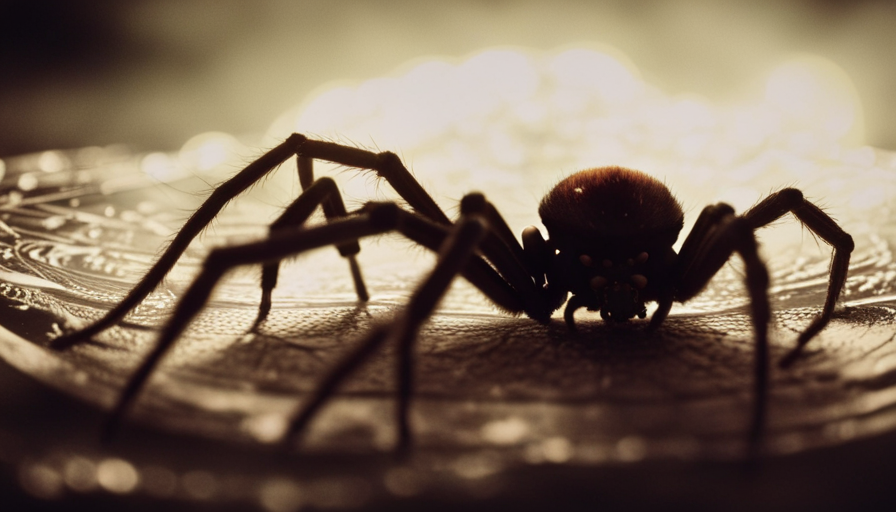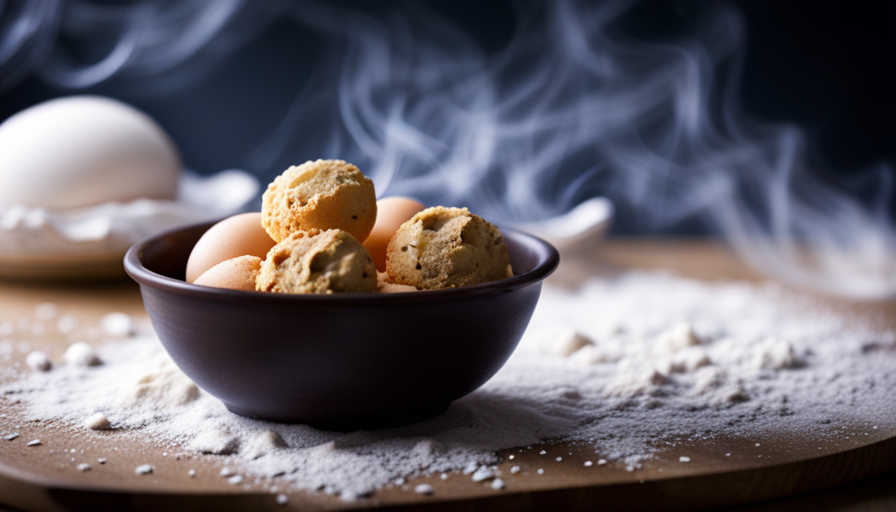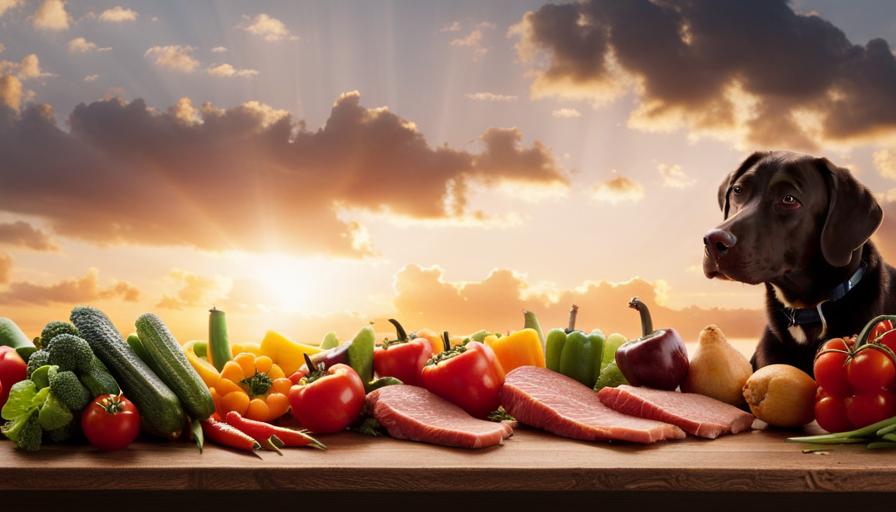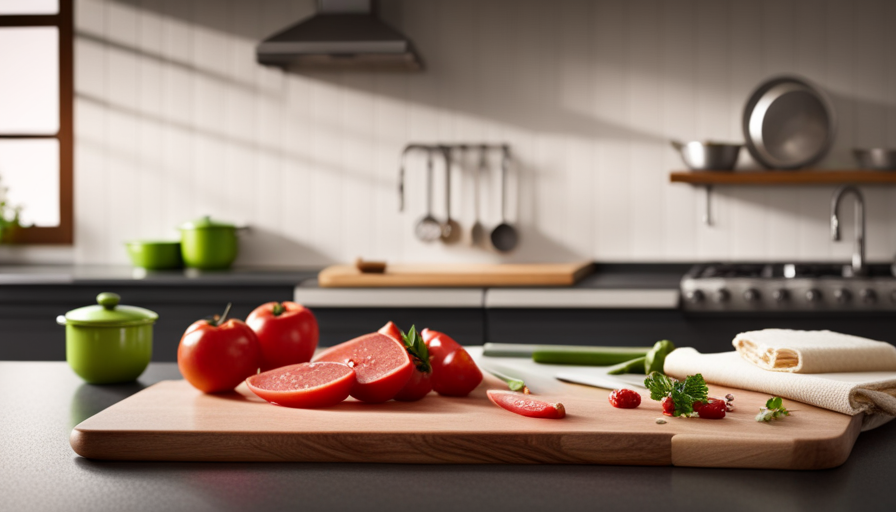Imagine this scenario: you are in the kitchen, getting ready to cook a tasty meal for your family. When you grab a plate, you see a tiny area where uncooked chicken was placed before. You begin to worry if it is safe to use that plate for your cooked food. Is it safe?
The answer lies in the realm of cross-contamination, a concept that can make or break your culinary endeavors. Cross-contamination occurs when bacteria from one food item transfers to another, potentially leading to foodborne illnesses. In the case of raw chicken, the risk is even higher. Salmonella, Campylobacter, and other harmful bacteria can lurk on its surface, waiting to wreak havoc on your health.
But fear not, my meticulous reader. By understanding safe handling practices, cooking temperatures, and expert recommendations, you can navigate the treacherous waters of cross-contamination and make informed decisions about food safety. Join us as we delve into the world of food hygiene, empowering you to protect yourself and your loved ones from potential hazards.
Key Takeaways
- Cross-contamination can occur when cooked food comes into contact with surfaces or utensils that have been contaminated with raw chicken.
- Proper hygiene practices, such as washing hands thoroughly and using separate cutting boards and utensils for raw and cooked chicken, can help prevent cross-contamination.
- It is important to store raw chicken properly in leak-proof containers on the lower shelves of the refrigerator to avoid contact with other foods.
- Cooking chicken thoroughly to an internal temperature of at least 165°F (74°C) is essential for killing bacteria and preventing foodborne illnesses.
Understanding Cross-Contamination Risk
If cooked food comes into contact with a surface that previously touched raw chicken, it’s crucial to understand the potential risks of cross-contamination. Preventing cross-contamination in food preparation is of utmost importance to ensure the safety of your meals.
Cross-contamination occurs when harmful bacteria from raw food, like chicken, are transferred to ready-to-eat or cooked food. This can happen through direct contact or indirectly, via utensils, cutting boards, or countertops.
Bacteria play a significant role in cross-contamination. They can be present on raw chicken and can cause foodborne illnesses if not handled properly. Salmonella and Campylobacter are two common bacteria found in raw poultry that can lead to severe stomach cramps, diarrhea, and vomiting. These bacteria can survive on surfaces and multiply rapidly, even at room temperature.
To prevent cross-contamination, it’s essential to follow meticulous food safety practices. Start by using separate cutting boards and utensils for raw chicken and other foods. Wash your hands thoroughly after handling raw chicken or any other raw meat. Ensure that surfaces, utensils, and equipment are properly cleaned and sanitized after each use. Additionally, store raw chicken in leak-proof containers on lower shelves of the refrigerator to prevent any drips onto other foods.
By understanding the risks of cross-contamination and implementing preventive measures, you can protect yourself and your loved ones from foodborne illnesses. Stay knowledgeable, meticulous, and authoritative in your food preparation practices to ensure safe and delicious meals.
The Importance of Proper Food Handling
Properly handling food is crucial to maintaining hygiene and preventing contamination. It is essential to adhere to strict guidelines when it comes to food handling, especially when dealing with raw chicken. Cross-contamination can occur when cooked food comes into contact with surfaces or utensils that have been contaminated by raw chicken. This can lead to the spread of harmful bacteria, such as Salmonella or Campylobacter, which can cause foodborne illnesses.
To prevent cross-contamination, it is important to follow proper hygiene practices. Always wash your hands thoroughly with soap and water before and after handling raw chicken. Use separate cutting boards and utensils for raw chicken and other foods to avoid the transfer of bacteria. It is also crucial to clean and sanitize all surfaces and utensils that have come into contact with raw chicken.
To emphasize the significance of proper food handling, let’s take a look at the following table:
| Proper Food Handling Practices | Importance |
|---|---|
| Wash hands before and after handling raw chicken | Removes bacteria from hands |
| Use separate cutting boards and utensils for raw chicken | Prevents cross-contamination |
| Clean and sanitize surfaces and utensils after use | Kills bacteria and prevents spread |
By following these meticulous practices, you can ensure that your cooked food remains safe and free from contamination. Remember, proper food handling is not only necessary for your own health but also for the well-being of those who consume your meals.
Potential Foodborne Illnesses from Raw Chicken
When handling raw chicken, it’s crucial to be aware of the potential foodborne illnesses that can lurk beneath its surface. Preventing cross contamination is key in ensuring the safety of your cooked food.
Raw chicken can be contaminated with bacteria such as Salmonella and Campylobacter, which can cause serious illnesses if ingested. Salmonella is one of the most common foodborne illnesses associated with raw chicken. It can cause symptoms like diarrhea, fever, and abdominal cramps. Campylobacter is another common bacteria found in raw chicken, and it can lead to symptoms such as diarrhea, nausea, and vomiting.
To prevent cross contamination, it is important to follow proper food handling procedures. Keep raw chicken separate from other foods, especially those that will be eaten raw or without further cooking. Use separate cutting boards and utensils for raw chicken to avoid spreading bacteria to other foods.
Additionally, make sure to cook chicken thoroughly to kill any bacteria that may be present. Use a food thermometer to ensure that the internal temperature reaches at least 165°F (74°C). This will help to eliminate any potential pathogens and reduce the risk of foodborne illnesses.
By being diligent in preventing cross contamination and properly cooking raw chicken, you can significantly reduce the risk of common foodborne illnesses associated with this poultry. Stay informed and take the necessary precautions to keep yourself and your loved ones safe.
Evaluating the Level of Contamination
Take a moment to assess the level of contamination in your kitchen, and remember that your loved ones’ health is at stake. When it comes to evaluating the risk of contamination from raw chicken, there are a few key factors to consider.
-
The first thing to assess is the extent of contact between the cooked food and the spot where the raw chicken was. If the cooked food only briefly came into contact with the raw chicken, the risk of contamination may be minimal. However, if the raw chicken juices or particles were left on the surface and the cooked food was in prolonged contact with them, the risk of contamination increases significantly.
-
Another important factor is the temperature at which the cooked food and the raw chicken were stored. If the cooked food was stored at a safe temperature and the raw chicken was properly refrigerated, the risk of contamination is lower. However, if the food was left at room temperature for an extended period, bacteria can multiply rapidly, increasing the risk of foodborne illness.
-
Lastly, consider the overall cleanliness of your kitchen. If your kitchen is well-maintained, regularly cleaned, and proper food handling practices are followed, the risk of contamination is minimized. However, if your kitchen is not kept clean or if cross-contamination is common, the risk of spreading harmful bacteria from raw chicken to cooked food is higher.
In order to minimize the risk of contamination, it’s crucial to handle raw chicken with care, ensuring proper storage, and maintaining cleanliness in your kitchen. By following these practices, you can help protect the health of your loved ones and reduce the risk of foodborne illnesses.
Safe Handling Practices in the Kitchen
To keep your kitchen safe, it’s important to practice proper handling techniques. Understanding hygiene practices and preventing cross-contamination are essential in maintaining a healthy environment for food preparation.
When it comes to handling raw chicken, it’s crucial to take extra precautions. First and foremost, always wash your hands thoroughly with soap and warm water before and after handling raw chicken. This will help eliminate any bacteria that may be present on your hands.
Additionally, make sure to clean and sanitize all utensils, cutting boards, and surfaces that come into contact with raw chicken. Using separate cutting boards for raw meats and other ingredients can help prevent cross-contamination.
It’s also important to store raw chicken properly in the refrigerator. Keep it in a leak-proof container on the bottom shelf to avoid any drips or spills onto other foods. Be mindful of not overcrowding the refrigerator, as this can lead to inadequate cooling and potential bacterial growth.
When cooking chicken, ensure it reaches a safe internal temperature of 165°F (74°C) to kill any harmful bacteria. Using a food thermometer is the best way to accurately determine if the chicken is cooked thoroughly.
By following these safe handling practices, you can significantly reduce the risk of contamination and keep your kitchen a safe and healthy space for food preparation. Stay vigilant and prioritize hygiene to maintain a clean and safe environment.
Cleaning and Sanitizing Surfaces
When it comes to safe handling practices in the kitchen, it’s crucial to pay close attention to cleaning and sanitizing surfaces. This is especially important in preventing cross-contamination, where harmful bacteria can spread from one surface to another.
To ensure the safety of your cooked food, it’s essential to thoroughly clean and disinfect any surfaces that have come into contact with raw chicken or its juices. This includes cutting boards, countertops, knives, and any other utensils used during the preparation process.
Surface disinfection is an effective way to kill bacteria and other pathogens that may be present. You can use a solution of bleach and water, or a commercial disinfectant specifically designed for kitchen use. Remember to follow the manufacturer’s instructions for proper dilution and contact time.
Meticulous cleaning and sanitizing of surfaces will greatly reduce the risk of cross-contamination and help keep your kitchen safe and hygienic. By taking these extra precautions, you can enjoy your meals knowing that you’ve done everything possible to protect yourself and your loved ones from foodborne illnesses.
So, remember, always clean and disinfect surfaces thoroughly to maintain a healthy and safe cooking environment.
Cooking Temperatures for Chicken
Make sure you know the proper cooking temperatures for chicken, so you can confidently serve a delicious and safe meal. Cooking chicken to the right temperature is crucial to kill any harmful bacteria that may be present.
Here are some important cooking techniques and food safety guidelines to keep in mind:
-
Internal Temperature: The internal temperature of cooked chicken should reach a minimum of 165°F (74°C). This ensures that any bacteria, such as salmonella or campylobacter, are effectively killed. Use a reliable food thermometer to accurately measure the temperature.
-
Cooking Methods: There are various cooking methods you can choose from, including baking, grilling, frying, or boiling. Regardless of the method you choose, it’s essential to reach the recommended internal temperature.
-
Preparing Different Cuts: Different cuts of chicken may require slightly different cooking times and temperatures. For example, bone-in chicken may take longer to cook compared to boneless chicken breasts. Always follow specific cooking recommendations for each cut.
-
Resting Time: After cooking, allow the chicken to rest for a few minutes. This helps the juices redistribute and ensures a juicier and more flavorful result.
By following these cooking techniques and food safety guidelines, you can enjoy a perfectly cooked chicken dish while keeping your family and guests safe from any potential foodborne illnesses. Remember, proper cooking temperatures are the key to a delicious and worry-free meal.
Assessing the Risk: Factors to Consider
Take into account various factors when assessing the risk associated with cooking chicken, ensuring you serve a safe and delicious meal.
One important factor to consider is the potential for cross-contamination. Cross-contamination occurs when cooked food comes into contact with surfaces or utensils that have been contaminated with raw chicken. This can happen if you place cooked food on a cutting board or plate that previously held raw chicken, or if you use the same utensils for both raw and cooked chicken without proper washing in between.
To evaluate the risk of cross-contamination, it’s crucial to practice good hygiene and sanitation. Always wash your hands thoroughly with soap and water before and after handling raw chicken. Use separate cutting boards and utensils for raw and cooked chicken to prevent any potential transfer of bacteria. Additionally, ensure that all surfaces and utensils are properly cleaned and sanitized after coming into contact with raw chicken.
Another factor to consider is the cooking temperature. Chicken should be cooked to an internal temperature of 165°F (74°C) to ensure that any harmful bacteria present are killed. Use a meat thermometer to accurately measure the temperature, as visual cues alone may not be sufficient.
By carefully assessing these risk factors, you can minimize the chances of cross-contamination and ensure that your cooked chicken is safe to eat. Remember to always prioritize food safety to protect yourself and your loved ones from foodborne illnesses.
Expert Recommendations on Handling Cross-Contamination
Now that you understand the various factors that contribute to the risk of cross-contamination, it’s important to know the expert recommendations on preventing it.
By following these best practices for food safety, you can significantly reduce the chances of contamination and keep yourself and your loved ones safe.
One of the most crucial steps in preventing cross-contamination is to thoroughly clean and sanitize all surfaces and utensils that come into contact with raw chicken. This includes cutting boards, knives, countertops, and any other items that may have been exposed to the raw chicken.
Experts also recommend using separate cutting boards and utensils for raw and cooked foods to minimize the risk of cross-contamination. This means having designated tools specifically for raw chicken and others for cooked food. Additionally, it’s important to wash your hands thoroughly with soap and water before and after handling raw chicken to avoid spreading bacteria.
Furthermore, storing raw chicken properly in the refrigerator is essential. It should be placed in a leak-proof container or sealed plastic bag to prevent any juices from coming into contact with other foods.
By following these expert recommendations and implementing best practices for food safety, you can greatly reduce the risk of cross-contamination in your kitchen. Stay vigilant, be meticulous in your approach, and prioritize the health and safety of yourself and those around you.
Conclusion: Making Informed Decisions about Food Safety
Remember, your knowledge about food safety is like a shield that protects you and your loved ones from the invisible dangers lurking in your kitchen. By making informed decisions about food safety, you can greatly reduce the risk of cross-contamination and keep your food safe to eat.
Here are some key points to consider when it comes to making informed decisions about food safety:
-
Separate: Always keep raw meats, poultry, seafood, and eggs separate from ready-to-eat foods. This prevents the spread of harmful bacteria from raw to cooked foods.
-
Clean: Properly clean and sanitize all surfaces, utensils, and cutting boards after they come into contact with raw foods. This helps eliminate any lingering bacteria that could contaminate other food items.
-
Cook: Ensure that all foods, especially meats and poultry, are cooked to the appropriate internal temperature. This kills off any harmful bacteria that may be present.
-
Store: Properly store leftovers in airtight containers and refrigerate them promptly. This prevents the growth of bacteria that can cause foodborne illnesses.
By following these guidelines and being mindful of the potential risks, you can confidently make informed decisions about food safety. Remember, it’s better to be cautious and take the necessary precautions than to risk the health and well-being of yourself and your loved ones.
Frequently Asked Questions
How long does it take for cross-contamination to occur?
Cross-contamination occurs when bacteria from raw chicken comes into contact with cooked food. The time it takes for cross-contamination to occur depends on several factors. These include the temperature, the type of bacteria present, and the length of time the food is left out.
Proper handling techniques, such as using separate cutting boards, utensils, and washing hands thoroughly, can help prevent cross-contamination. Following these practices is crucial to ensure food safety and prevent the spread of harmful bacteria.
Can cross-contamination occur if the raw chicken is packaged and separated from other foods?
Proper packaging and handling practices play a crucial role in preventing cross-contamination of raw chicken. Packaging precautions, such as using leak-proof containers and keeping raw chicken separate from other foods, can significantly reduce the risk of cross-contamination. When handling raw chicken, it’s essential to wash hands thoroughly before and after, use separate cutting boards and utensils, and avoid placing cooked food on surfaces that have come into contact with raw chicken.
Following these best practices can help ensure food safety and prevent cross-contamination.
Are there any specific areas in the kitchen that are more prone to cross-contamination?
Proper kitchen hygiene practices play a crucial role in preventing cross-contamination. It’s important to be meticulous when handling raw chicken and to use separate cutting boards for raw and cooked foods. By doing so, you minimize the risk of harmful bacteria spreading from the raw chicken to other areas of the kitchen.
Some areas that are more prone to cross-contamination include countertops, utensils, and sink surfaces. Adhering to these practices ensures food safety and protects against potential health risks.
Can cross-contamination occur if the raw chicken is cooked to a high temperature?
Do you really want to take a chance with cross-contamination? Proper food handling techniques are crucial to prevent the risks associated with consuming undercooked chicken. Even if raw chicken’s cooked to a high temperature, cross-contamination can still occur if cooked food touches a spot where raw chicken was.
It’s essential to maintain meticulous hygiene in the kitchen to ensure the safety of your meals. Don’t underestimate the importance of practicing proper food handling protocols.
Is it safe to eat cooked food that has come into contact with raw chicken if it has been refrigerated?
To ensure food safety, it’s crucial to follow proper handling techniques when dealing with raw chicken. This includes using separate cutting boards and utensils for raw chicken and other foods. By doing so, you can prevent cross-contamination and reduce the risk of foodborne illnesses.
If cooked food has come into contact with raw chicken, it’s generally safe to eat if it’s been refrigerated promptly. However, it’s still advisable to exercise caution and thoroughly reheat the food before consuming.
Is It Safe to Eat Food That Has Touched a Spot Where Raw Chicken Was?
It is not safe to eat food that has come into contact with raw chicken, as it can lead to raw meat cross-contamination with food. Bacteria from the raw chicken can easily transfer to other foods, causing foodborne illness. It’s crucial to practice proper food handling and keep raw meats separate from ready-to-eat items.
Conclusion
So, now you know the answer to the pressing question of whether it’s okay if cooked food touches a spot where raw chicken was. And the answer is… drumroll please… NO!
Cross-contamination is no joke when it comes to food safety. It’s like playing a dangerous game of culinary Russian roulette. But fear not, dear reader, for armed with knowledge about proper food handling and safe cooking temperatures, you can protect yourself from the perils of foodborne illnesses.
So next time, be meticulous in your kitchen practices and make informed decisions to keep your meals both delicious and safe.
Stay savvy, my friends.










